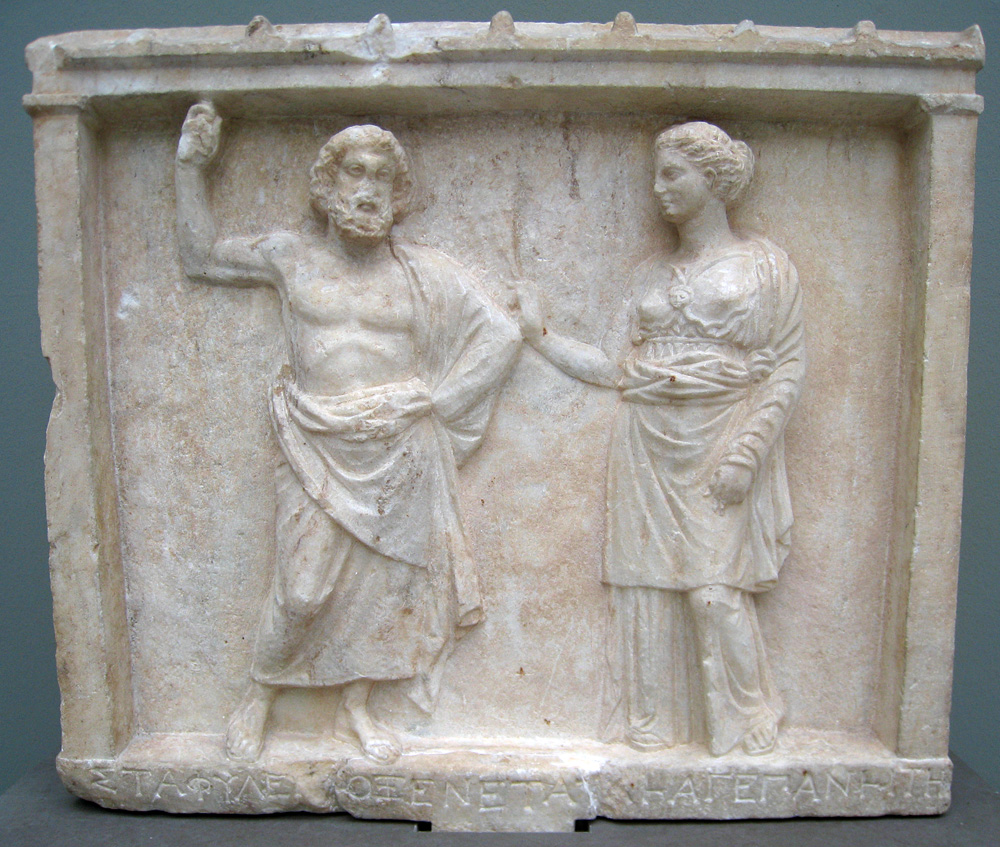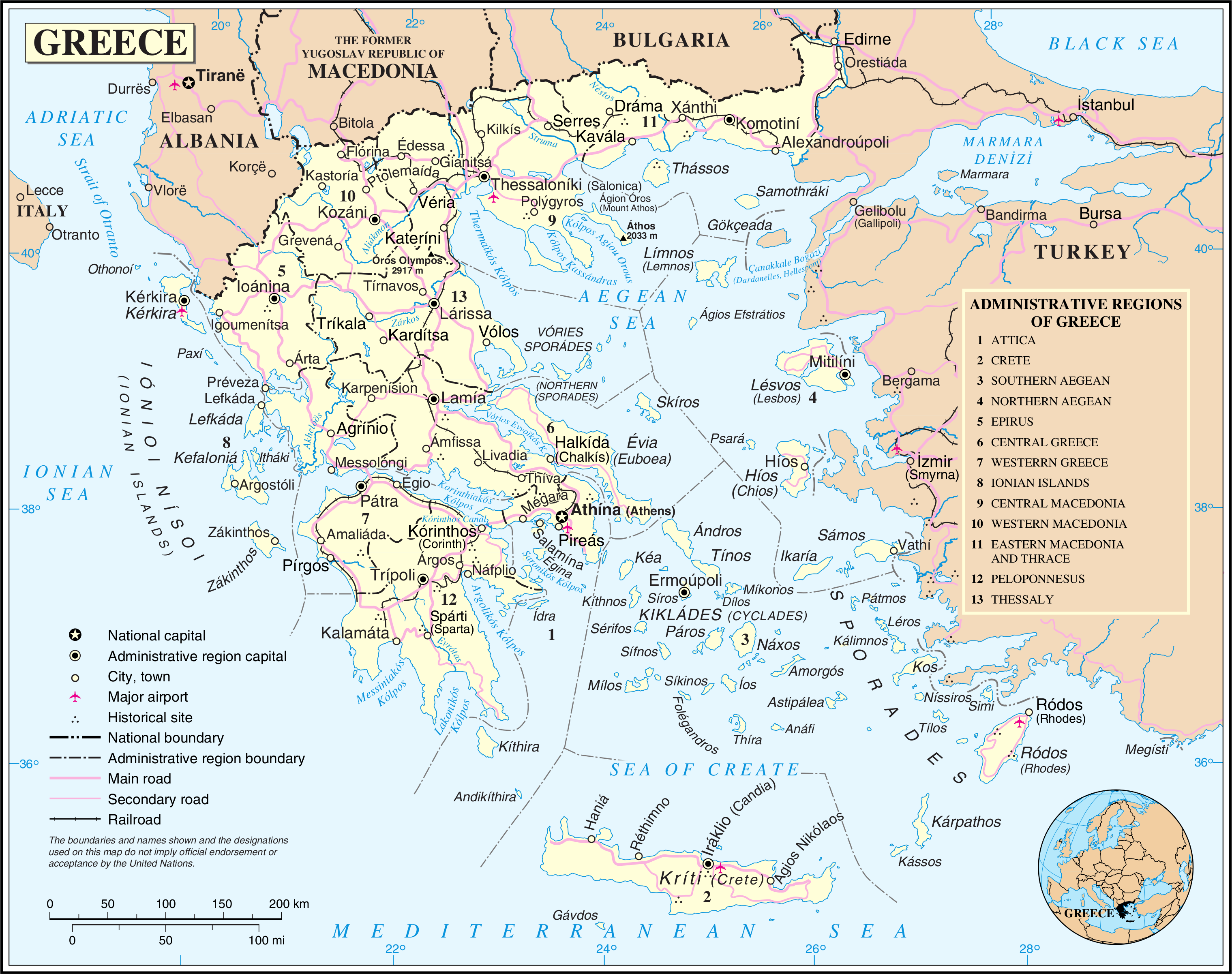|
Staphylos
Stafylos () is a village on the island Skopelos, Sporades islands, Greece. It lies within the region of Thessaly. It is located 4 kilometres south of the main town Skopelos. The area of Stafylos includes a bay and hotels and is accessible by local bus, private car, or on foot. Because of its beauty and proximity to the town, the beach at Staphylos is one of the most popular on the island and so it is often very crowded. This bay owes its name to the Minoan King Staphylus whose ships are supposed to have landed in this cove. A Bronze Age The Bronze Age () was a historical period characterised principally by the use of bronze tools and the development of complex urban societies, as well as the adoption of writing in some areas. The Bronze Age is the middle principal period of ... tomb was discovered on the point of land between Stafylos beach and Velanio. References Skopelos Populated places in the Sporades {{Thessaly-geo-stub ... [...More Info...] [...Related Items...] OR: [Wikipedia] [Google] [Baidu] |
Skopelos
Skopelos (, ) is a Greek island in the western Aegean Sea. Skopelos is one of several islands that comprise the Northern Sporades island group, which lies east of the Pelion peninsula on the mainland and north of the island of Euboea. It is part of the Thessaly region. Skopelos is also the name of the island's main port and municipal center. The other communities of the island are Glossa and Neo Klima (Elios). The geography of Skopelos includes two mountains over ; Delphi () in the center of the island, and Palouki () in the southeast. With an area of Skopelos is slightly larger than Mykonos () and Santorini (). The nearest inhabited islands are Skiathos to the west and Alonnisos to the east. History According to the legend, Skopelos was founded by Staphylos (Greek for grape), one of the sons of the god Dionysos and the princess Ariadne of Crete. Historically, in the Late Bronze Age the island, then known as Peparethos or Peparethus (), was colonised by the Minoans, who in ... [...More Info...] [...Related Items...] OR: [Wikipedia] [Google] [Baidu] |
Skopelos (town)
Skopelos () is the main town on the island of Skopelos. The island is located east of mainland Greece, northeast of the island of Euboea and is part of the regional unit of the Sporades in the region of Thessaly. It has a port and a small heliport. History In island legend Skopelos was founded by Staphylos (Greek for grape), one of the sons of the god Dionysos and the Princess Ariadne of Crete. Historically, in the Late Bronze Age Skopelos, then known as Peparethos, was colonized by Cretans who introduced viticulture to the island. In antiquity, the ancient city of Peparethus or Peparethos () was located on the site of Skopelos town. Peparethus was a member of the Delian League. The ancient city suffered from an earthquake during the Peloponnesian War (426 BCE). In 207 BCE, Philip V of Macedon sent a garrison to the city of Peparethus, to defend it against the Romans; but he destroyed it in 200 BCE, that it might not fall into the hands of the latter. Economy The ... [...More Info...] [...Related Items...] OR: [Wikipedia] [Google] [Baidu] |
Staphylus
Staphylus (; ) is one of several personages of ancient Greek mythology, almost always associated with grapes or wine: * Staphylus, son of wine-god Dionysus and Ariadne. * Staphylus, beloved of Dionysus, from the island of Thasos. It is thanks to Dionysus' love for him that Thasian wine is distinguished. * Staphylus, in a reconstructed myth, the son of Bacchus and Erigone, where Bacchus assumed the form of a grape which Erigone ate. She immediately realized that she was with child and in time gave birth to a son whom she named Staphylus. * Staphylus, husband of Methe and father of Botrys. The family held court in their palace at Assyria. They received Dionysus as guest and held a banquet in his honor. Staphylus died a sudden death the next morning after the feast; to console his wife and son, Dionysus named grape bunches after Staphylus, drunkenness after Methe, and grapes after Botrys. * Staphylus, son of Oenomaus, who fought on Dionysus' side against Poseidon in the conflict ... [...More Info...] [...Related Items...] OR: [Wikipedia] [Google] [Baidu] |
Sporades
The (Northern) Sporades are an archipelago along the east coast of Greece, northeast of the island of Euboea,"Skyros - Britannica Concise" (description), Britannica Concise, 2006, webpageEB-Skyrosnotes "including Skiathos, Skopelos, Skyros, and Alonnisos." in the Aegean Sea. They consist of 24 islands, four of which are permanently inhabited: Alonnisos, Skiathos, Skopelos and Skyros. They may also be referred to as the Thessalian Sporades (). Etymology "Sporades" means "those scattered" (compare with "sporadic"). From Classical Antiquity the name has referred to the Aegean island groups outside the central archipelago of the Cyclades. Geography In modern geographical parlance, there are five different Sporades groups: * Thessalian Sporades () or Northern Sporades. Since 1960, the term "Sporades" refers mainly to these islands: **Skopelos ** Alonnisos ** Skiathos ** Skyros ** Kyra Panagia ** Peristera ** Gioura ** Skantzoura ** Piperi (Greece), Piperi ** Tsougria * Saronic Islan ... [...More Info...] [...Related Items...] OR: [Wikipedia] [Google] [Baidu] |
Greece
Greece, officially the Hellenic Republic, is a country in Southeast Europe. Located on the southern tip of the Balkan peninsula, it shares land borders with Albania to the northwest, North Macedonia and Bulgaria to the north, and Turkey to the east. The Aegean Sea lies to the east of the Geography of Greece, mainland, the Ionian Sea to the west, and the Sea of Crete and the Mediterranean Sea to the south. Greece has the longest coastline on the Mediterranean Basin, spanning List of islands of Greece, thousands of islands and nine Geographic regions of Greece, traditional geographic regions. It has a population of over 10 million. Athens is the nation's capital and List of cities and towns in Greece, largest city, followed by Thessaloniki and Patras. Greece is considered the cradle of Western culture, Western civilisation and the birthplace of Athenian democracy, democracy, Western philosophy, Western literature, historiography, political science, major History of science in cl ... [...More Info...] [...Related Items...] OR: [Wikipedia] [Google] [Baidu] |
Administrative Regions Of Greece
The regions of Greece () are the country's thirteen second-level administrative divisions of Greece, administrative entities, counting decentralized administrations of Greece as first-level. Regions are divided into regional units of Greece, regional units, known as prefectures of Greece, prefectures until 2011. History The current regions were established in July 1986 (the presidential decree officially establishing them was signed in 1987), by decision of the interior minister, Menios Koutsogiorgas, as second-level administrative entities, complementing the Prefectures of Greece, prefectures (Law 1622/1986). Ν.1622/86 "Τοπική Αυτοδιοίκηση - Περιφερειακή Ανάπτυξη - Δημοκρατικός Προγραμματισμός", (ΦΕΚ 92/τ.Α΄/14-7-1986) Before 1986, there was a traditional division into broad geographic regions of Greece, historical–geographical regions (γεωγραφικά διαμερίσματα), which, however, was of ... [...More Info...] [...Related Items...] OR: [Wikipedia] [Google] [Baidu] |
Thessaly
Thessaly ( ; ; ancient Aeolic Greek#Thessalian, Thessalian: , ) is a traditional geographic regions of Greece, geographic and modern administrative regions of Greece, administrative region of Greece, comprising most of the ancient Thessaly, ancient region of the same name. Before the Greek Dark Ages, Thessaly was known as Aeolia (, ), and appears thus in Homer's ''Odyssey''. Thessaly Convention of Constantinople (1881), became part of the modern Greek state in 1881, after four and a half centuries of Ottoman Greece, Ottoman rule. Since 1987 it has formed one of the country's 13 Modern regions of Greece, regions and is further (since the Kallikratis reform of 2011) sub-divided into five regional units of Greece, regional units and 25 municipalities of Greece, municipalities. The capital of the region is Larissa. Thessaly lies in northern central Greece and borders the regions of Macedonia (Greece), Macedonia to the north, Epirus (region), Epirus to the west, Central Greece (geo ... [...More Info...] [...Related Items...] OR: [Wikipedia] [Google] [Baidu] |
Hotel
A hotel is an establishment that provides paid lodging on a short-term basis. Facilities provided inside a hotel room may range from a modest-quality mattress in a small room to large suites with bigger, higher-quality beds, a dresser, a refrigerator, and other kitchen facilities, upholstered chairs, a television, and en-suite bathrooms. Small, lower-priced hotels may offer only the most basic guest services and facilities. Larger, higher-priced hotels may provide additional guest facilities such as a swimming pool, a business center with computers, printers, and other office equipment, childcare, conference and event facilities, tennis or basketball courts, gymnasium, restaurants, day spa, and social function services. Hotel rooms are usually numbered (or named in some smaller hotels and B&Bs) to allow guests to identify their room. Some boutique, high-end hotels have custom decorated rooms. Some hotels offer meals as part of a room and board arrangement. In Japan, cap ... [...More Info...] [...Related Items...] OR: [Wikipedia] [Google] [Baidu] |
Minoan Civilization
The Minoan civilization was a Bronze Age culture which was centered on the island of Crete. Known for its monumental architecture and energetic art, it is often regarded as the first civilization in Europe. The ruins of the Minoan palaces at Knossos and Phaistos are popular tourist attractions. The Minoan civilization developed from the local Neolithic culture around 3100BC, with complex urban settlements beginning around 2000BC. After 1450BC, they came under the cultural and perhaps political domination of the mainland Mycenaean Greeks, forming a hybrid culture which lasted until around 1100BC. Minoan art included elaborately decorated pottery, seals, figurines, and colorful frescoes. Typical subjects include nature and ritual. Minoan art is often described as having a fantastical or ecstatic quality, with figures rendered in a manner suggesting motion. Little is known about the structure of Minoan society. Minoan art contains no unambiguous depiction of a monarch, and t ... [...More Info...] [...Related Items...] OR: [Wikipedia] [Google] [Baidu] |
Bronze Age
The Bronze Age () was a historical period characterised principally by the use of bronze tools and the development of complex urban societies, as well as the adoption of writing in some areas. The Bronze Age is the middle principal period of the three-age system, following the Stone Age and preceding the Iron Age. Conceived as a global era, the Bronze Age follows the Neolithic, with a transition period between the two known as the Chalcolithic. The final decades of the Bronze Age in the Mediterranean basin are often characterised as a period of widespread societal collapse known as the Late Bronze Age collapse (), although its severity and scope are debated among scholars. An ancient civilisation is deemed to be part of the Bronze Age if it either produced bronze by smelting its own copper and alloying it with tin, arsenic, or other metals, or traded other items for bronze from producing areas elsewhere. Bronze Age cultures were the first to History of writing, develop writin ... [...More Info...] [...Related Items...] OR: [Wikipedia] [Google] [Baidu] |








